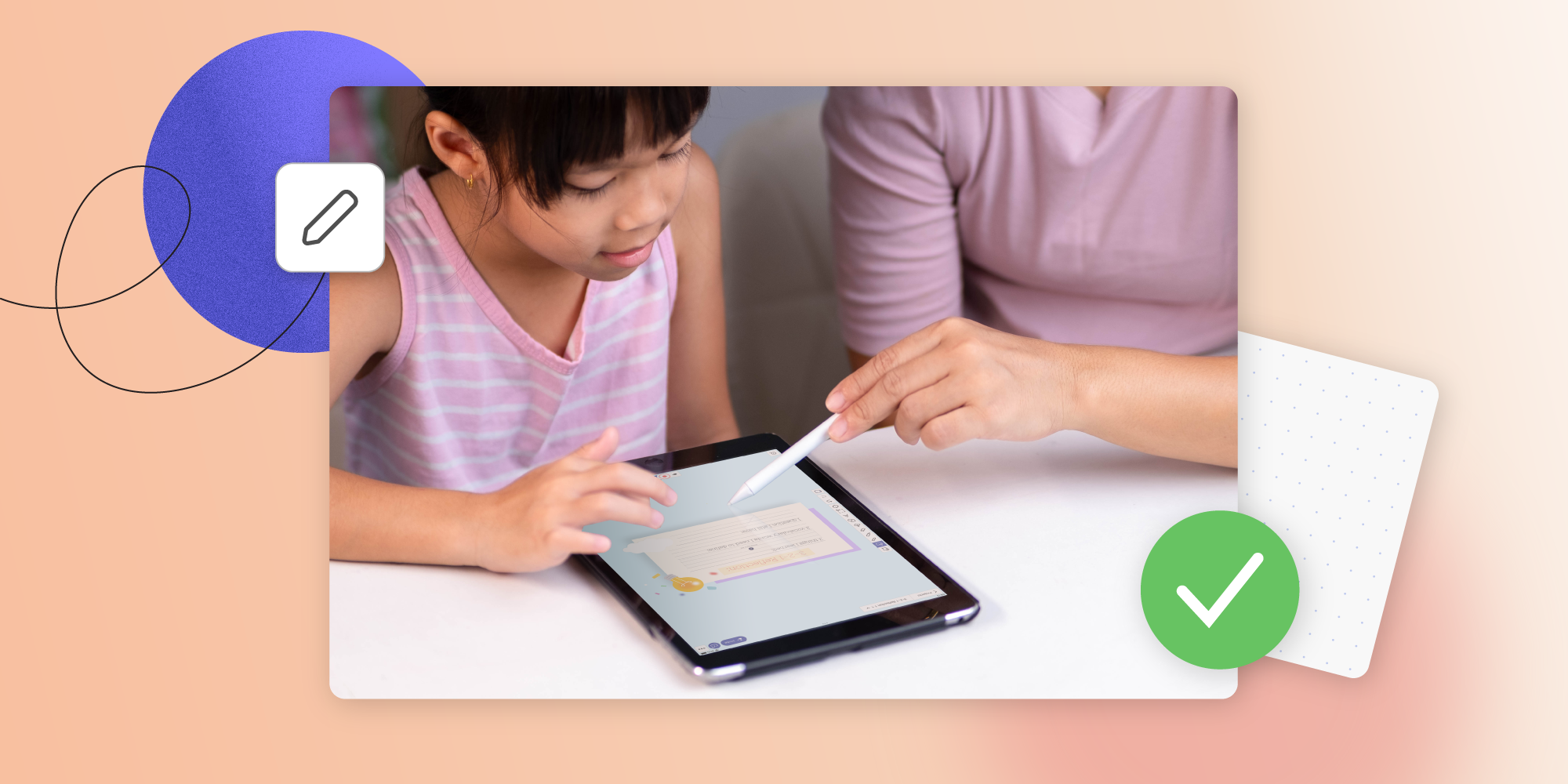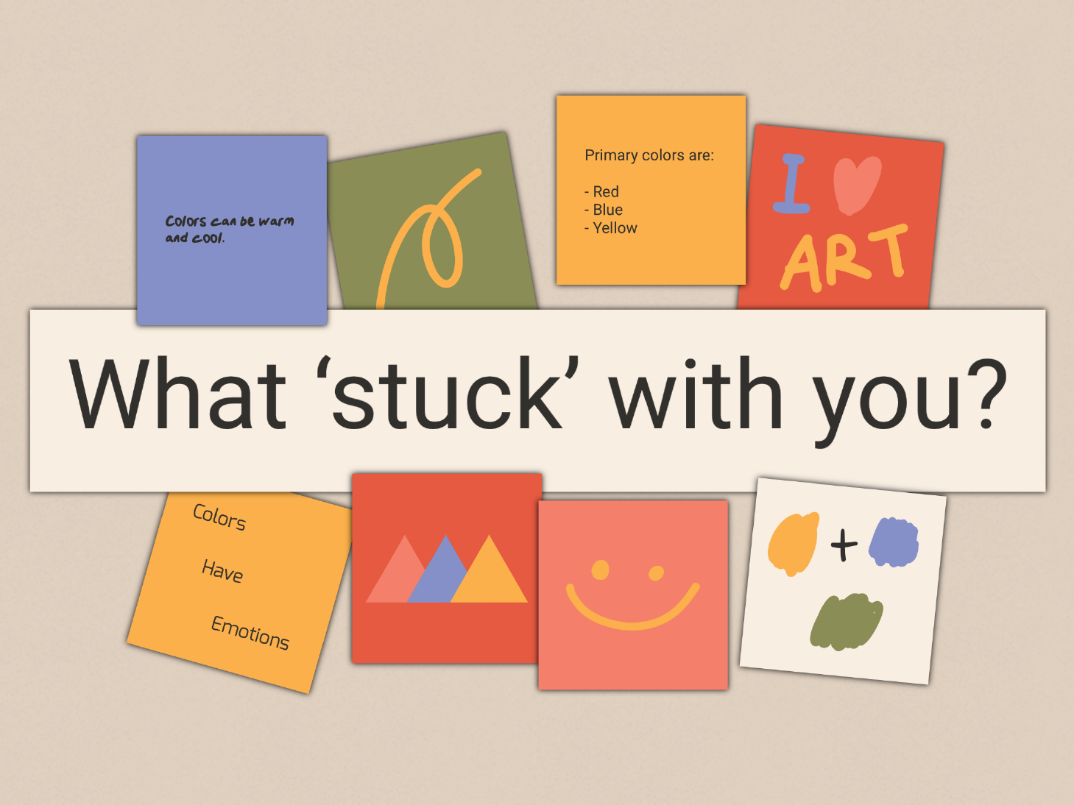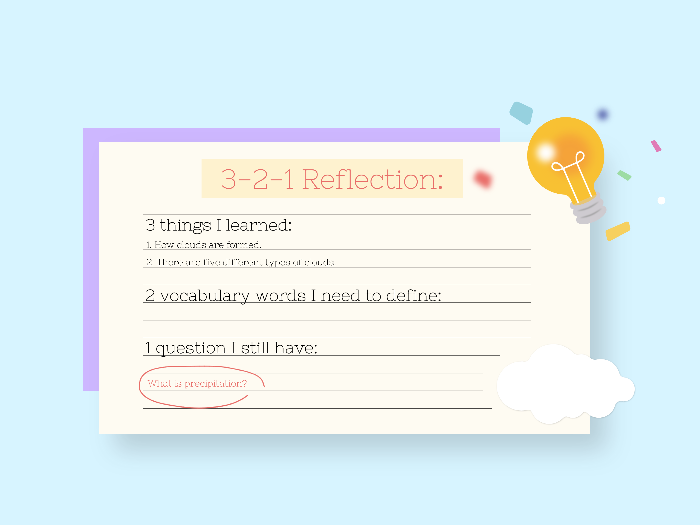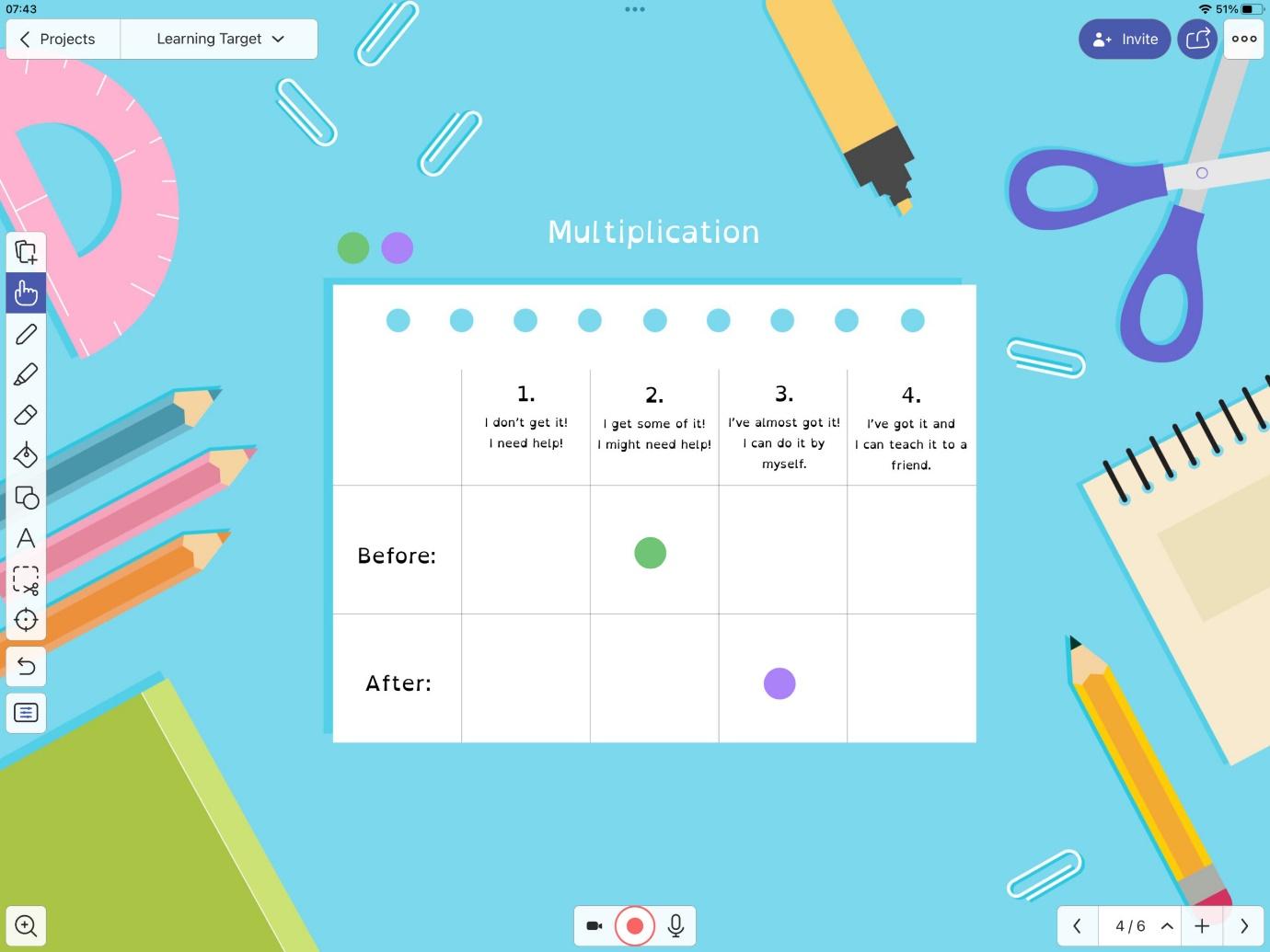A teacher’s guide to different types of assessments

Table of Contents
Exploring different assessment types
Assessments are an essential part of education. While many people have a misconception that an assessment is always the final goal, different types of assessments can – and should – take place throughout the academic year.
The right type of assessment helps teachers understand what their students have learned and the areas they need to improve on. They also enable students to better recognize their strengths and weaknesses, too.
Three of the most common assessment types are diagnostic, formative, and summative.
Diagnostic assessment
Also known as a pre-test, a diagnostic assessment establishes what knowledge a student possesses before formal learning begins. Teachers can then use this information to alter their lessons accordingly and tailor the amount of attention each pupil receives.
Because a diagnostic assessment aims to understand students’ existing knowledge, strengths, and weaknesses, it will not count toward grades. The goal is to improve teaching by recognizing areas that need improvement; it’s never to judge students for what they do not know.
Types of diagnostic assessment
Educators can use different methods to assess their students’ pre-existing knowledge. Types of diagnostic assessments include:
- Quizzes – these can be a speedy way to assess knowledge without the pressure of a test.
- Mock exam – teachers may prefer to set a formal test for a more robust assessment.
- Class surveys – asking students to share what they know can help teachers gauge knowledge levels in their classrooms.
- Discussion boards – rather than teachers asking students to put their hands up, educators can request that their pupils write down what they know. Students can do this collaboratively on an Explain Everything online whiteboard when paired with an interactive display, such as an ActivPanel.
- Debates and discussions – Teachers can ask their students to discuss what they know in smaller groups, sometimes forming arguments. To understand what is being discussed, teachers need to spend time with each group or ask students to present back to the class.
- Mind maps – students can write down everything they know. Teachers can then review these for any obvious gaps or mistakes.
- K-W-L chart – students can note down what they know (K), want to know (W), and what they’ve already learned about a topic (L). These may not work if the topic is new (as the student hasn’t learned anything about the subject so far). However, teachers can set these at the end of an introductory lesson to establish what basic information is new for their class.
The assessment a teacher chooses to use will depend on their aim. For example, if the goal is to assess individual needs, a teacher must use independent assessments (e.g. quizzes). This is because a group activity can result in more experienced (or more vocal) students masking their peers’ knowledge gaps. However, a group assessment would work well if a teacher wants to understand the general subject familiarity in their classroom.
When to use diagnostic assessment
A diagnostic assessment should take place at a starting point. This could be the beginning of a specific study area (such as a topic on the syllabus) or time-based (such as the first day of term or school year).
Teachers can use diagnostic assessments to inform their future lesson plans. For example, if the diagnostic assessments show a common knowledge gap, teachers can address this in future sessions.
Educators can also use diagnostic assessments to adjust learning on an individual level. These assessments can help teachers identify which students need more help and which students already have a lot of knowledge and will need more challenging material. To ensure each pupil is benefitting from their education, teachers may want to introduce differentiation.
Educators can also use diagnostic assessments to inform classroom groupings. For example, a school may use diagnostic assessments to work out the academic abilities of new students. This may determine whether pupils should be taught in different groups.
Formative assessment
A formative assessment enables teachers to check in on their pupils’ progress. Teachers can use the information from these assessments to inform future instruction, recognizing the areas that they may need to repeat. Teachers can also use formative assessments to glean insights into their teaching (i.e. what methods have worked and what ones haven’t).
Because formative assessments are a check-in point, they will not affect students’ grades. Instead, educators use these to tweak future lessons, which will help pupils excel at formal exams.
Types of formative assessment
There are many ways to conduct a formative assessment, and not all involve a teacher assigning new work.
Formative assessment examples include:
- Assessing students’ work so far – Teachers can conduct formative assessments without their students’ knowledge. By examining homework and classroom activities, educators can analyze their pupils’ abilities and identify areas for improvement.
- One-minute papers – teachers can assess how much a student has learned in each lesson with a quick one-question assessment as each lesson wraps up. They can then review this and see if the lesson met its learning goals.
- Exit slips – Teachers can ask students for feedback at the end of each lesson on small pieces of paper, known as exit slips or exit tickets. Alternatively, they can conduct this digitally using Explain Everything Whiteboard technology. Whatever the method, teachers can use this feedback to tweak future lessons.
- Quizzes – Low-stakes quizzes can be a quick and objective way of assessing students’ knowledge levels. These can be multiple-choice.
- Problem pairs – This method can help educators understand if their students have grasped a skill. It works by the teacher writing down two very similar examples (or problems), completing one themselves, and then asking a student to complete the other. This activity can be carried out using Explain Everything software, with the teacher writing their example on the board for pupils to see easily. Educators can invite a student (or students) to complete the other problem on the online whiteboard.
When to use formative assessment
Formative assessments inform future lessons and should take place during a learning period. Some learning needs to have come before them, so they cannot take place at the beginning. They will also not be as useful at the end of a topic because the teacher cannot implement any findings for the current cohort of students.
Formative assessments, such as regular exit slips, can be continuous or serve as mid-term or mid-topic check-in points. As this type of assessment doesn’t contribute to students’ grades, it’s up to teachers how often they take place. Some educators may want to constantly conduct assessments to inform future lessons. Others may prefer to give pupils longer to learn information before checking their progress.
Used well, formative assessments benefit teachers and their students. Educators can use them to improve their teaching and develop professionally. Students can reap the rewards of future lessons that will better match how they learn best and address any areas of missing knowledge.
Teachers can use Explain Everything Advanced’s built-in apps to carry out formative assessments. With the Spinner app, teachers can randomize information. They can input exit slip questions and then spin to randomly decide which student gets each question. Alternatively, teachers can use the Polling feature to create multiple choice, text, or creative polls (where students can draw on the canvas) about whatever they need to assess.
Summative assessment
A summative assessment measures what a student has learned at the end of a course, topic, or timeframe (e.g. academic year).
Finals and formal exams are summative assessments which contribute to students’ grades. However, some teachers may use informal summative assessments to review performance outside moderated exams.
Types of summative assessment
The aim of all summative assessments is the same: to review what has been achieved at the end of a unit or time period. However, teachers can measure pupils’ overall learning in different ways beyond exam papers.
Examples of summative assessments include:
- Exams – Tests are the most common summative assessments, with students formally quizzed on everything they’ve learned across a unit. These could take place throughout the semester after each topic (usually called term papers) or encompass all learnings (such as finals).
- Essays or dissertations – Educators may assign essays or dissertations as final assignments for summative assessments that take place in students’ own time.
- Presentations – Teachers may give their students the option of presenting back their learnings via presentations. Pupils could present their findings in groups or independently.
- Projects – Depending on the nature of the subject, a project may be the most appropriate way to assess what students have learned. For example, building something with coding for a computing course could be a summative assessment.
When to use summative assessment
Summative assessments measure students’ learning at the end of a topic, term, or academic year.
Summative assessments are often formal assessments that determine students’ grades. They can also take the form of mock exams. For example, children too young to be formally assessed may still take summative assessments. Educators can still use this information to understand their pupils’ progress.
The subject often determines the timing and type of a summative assessment. For example, in English, a summative assessment may take place after completing a piece of literature. It may be unrealistic (and not particularly useful) for students to retain analyses of books and poems for months. Because of this, teachers may assess their students via multiple summative assessments in the form of essays. However, for math, teachers may choose to have one summative exam to determine whether students have retained taught skills at the end of the year.
Assessment templates
Explain Everything’s digital whiteboard has various customizable templates that teachers can use for assessments.
Explain Everything’s free assessment templates include:
What ‘stuck’ with you? exit slip template
Instead of giving students physical exit tickets, teachers can use the Explain Everything Whiteboard to record feedback.
Teachers can digitize this formative assessment by asking students to respond to the question ‘What ‘stuck’ with you?’ with online sticky notes. Each pupil can write (or draw) their answer. As teachers can save the completed whiteboard work, they can keep a digital copy.
Open the What ‘stuck’ with you? template.

3-2-1 Reflection exit ticket template
Another Explain Everything template that can serve as an exit pass is the 3-2-1 Reflection template. This breaks down the feedback into three areas: one with three points, another with two, and one with a single point.
Teachers can adapt the questions as they see fit. For example, students could answer three things they’ve learned, two questions they still have, and one thing they found challenging.
Besides using this template as a formative check-in assessment, teachers can adapt this to suit diagnostic K-W-L assessments. To use it in this way, teachers can ask their students to identify three things they already know (K), two things they want to know (W), and one thing they’ve learned so far (L).
Open the 3-2-1 Reflection template.

Learning target tracker template
Teachers can use the Explain Everything learning target tracker as a diagnostic tool (for pre-assessment) and a formative assessment to check their students’ progress.
This template invites pupils to self-assess their understanding of a topic or a skill. The learning tracker is pre-filled with four statements relating to knowledge:
- “1. I don’t get it! I need help!”
- “2. I get some of it! I might need help!”
- “3. I’ve almost got it! I can do it by myself.”
- “4. I’ve got it! And I can teach it to a friend.”
The aim is to move as many students as possible to the fourth category. If many pupils still answer in 1 or 2, teachers know they must spend longer on this subject. Teachers can use this information to differentiate lessons if only a smaller number are struggling.
Open the learning target tracker template.

Using Explain Everything for different types of assessments
Explain Everything’s templates can help teachers make assessments more interactive. The easier it is for teachers to assess pupils, the quicker they can adapt lessons to help students meet their learning goals.
To try out these templates in your classroom, sign up for your free Explain Everything account.
Recommended articles:
- How to master the “I Do, We Do, You Do” model approach to teaching
- Create engaging whiteboard assignments in best LMSs
- The whole story matters – providing effective feedback

